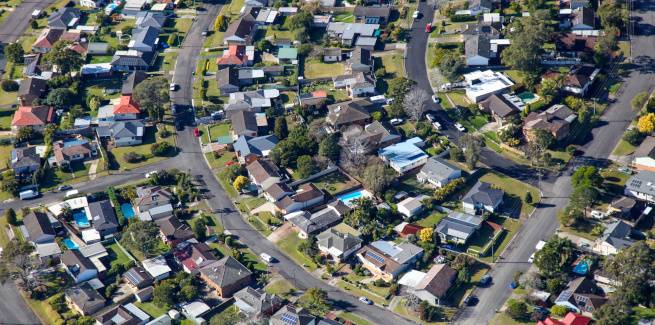According to the CoreLogic Home Value Index, Australian housing values have held strong throughout April, despite a sharp drop in market activity, severely weak consumer sentiment, and ongoing restrictions placed on the residential sales market amid the COVID-19 pandemic.
From 25 March, the government placed strict bans on open homes and on-site public auctions in order to slow the spread of the virus, forcing real estate agents to conduct private inspections exclusively and migrate all home auctions to online portals.
These challenges have seen auction volumes fall, withdrawal rates skyrocket and clearance rates take a hit.
Despite a challenging marketplace, most regions across Australia experienced minor growth in housing values in the month of April, increasing national property values by 0.3 per cent compared with March.
However, this figure is the smallest figure for month-on-month growth recorded since June 2019, when the index fell 0.2 per cent.
Additionally, the rate of growth previously seen in the market has slowed considerably, with April experiencing growth at over half the rate seen in March, up 0.7 per cent from February.
CoreLogic head of research Tim Lawless said, “Although housing values were generally slightly positive over the month, the trend has clearly weakened since mid-to-late March, when social distancing policies were implemented and consumer sentiment started to plummet.”
The regional markets recorded stronger growth than the combined capital cities in April, with combined regional Australian markets growing 0.5 per cent over the month, compared with just 0.2 per cent growth for the capitals.
Melbourne values fell by 0.3 per cent over April, the sharpest decline seen across the country, while Sydney prices nudged upwards 0.4 per cent. Previously, both cities averaged a monthly growth rate of around 1.7 per cent in March.
According to Mr Lawless, Australia’s largest cities have a higher level of downside risk.
“Sydney and Melbourne arguably show a higher risk profile relative to other markets due to their large exposure to overseas migration as a source of housing demand, along with greater exposure to the downturn in foreign students, stretched housing affordability and already low rental yields that are likely to reduce further on the back of rising vacancy rates and lower rents,” he said.
Darwin experienced the strongest growth in April, with a 1.7 per cent jump in values, while Hobart was the only other capital city, along with Melbourne, to see negative growth, down 0.1 per cent month-on-month.
Explaining the drop in Hobart values, Mr Lawless said: “Hobart has the most exposure of any capital city, at least proportionally, to the industry sectors most heavily impacted by COVID-19 in terms of employment, with 12.7 per cent of the workforce employed within accommodation and food services, and arts and recreation services sectors.”
Meanwhile, Perth and Adelaide both outperformed their six-month average pace of growth in April, and 0.2 per cent and 0.4 per cent growth, respectively, which, according to CoreLogic, demonstrates “some resilience” despite weaker conditions.
Expensive markets to slow the fastest
According to CoreLogic’s stratified hedonic index, it is the most expensive markets around the nation that are slowing the fastest, with the top quartile of each market weakening substantially compared with other subsections of the market.
Quarterly gains across the top quartile of the market reduced from 6.6 per cent in late 2019 to 2.4 per cent in the three months ending April 2020.
Further, the top quartile of capital city markets recorded a rise of just 0.1 per cent in April, compared with a 0.3 per cent increase for the “middle” of the market, and a 0.2 per cent rise across the lower quartile.
“Melbourne’s upper quartile market was the biggest drag on the aggregate measures, with dwelling values down 0.8 per cent in April, while the lower quartile and middle of the market continued to record a subtle rise in values over the month,” CoreLogic stated.
Meanwhile, in Sydney, the upper quartile, previously leading the pace of growth, saw the lowest monthly rise in April at 0.3 per cent, while the NSW capital’s middle quartiles recorded a stronger 0.6 per cent lift in values.
“The trends were more even across the value-based strata of the smaller capitals, reflecting a more sustainable history of capital gains,” CoreLogic noted.
“Premium housing markets have previously been more reactive to changes in the economic environment, and this trend is once again becoming apparent.”
[Related: Construction costs rise, rental market strained]
 ;
;

Comments (0)